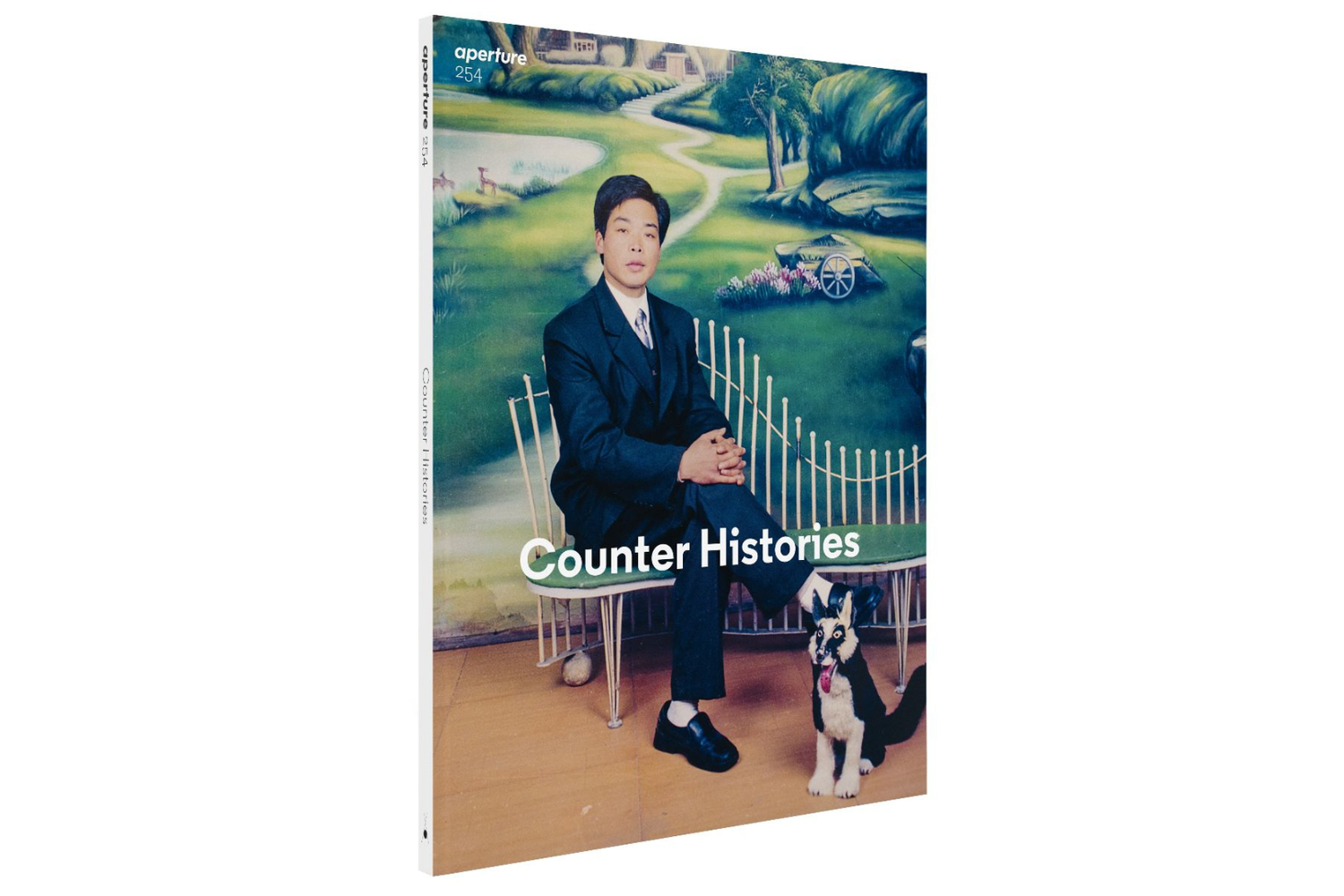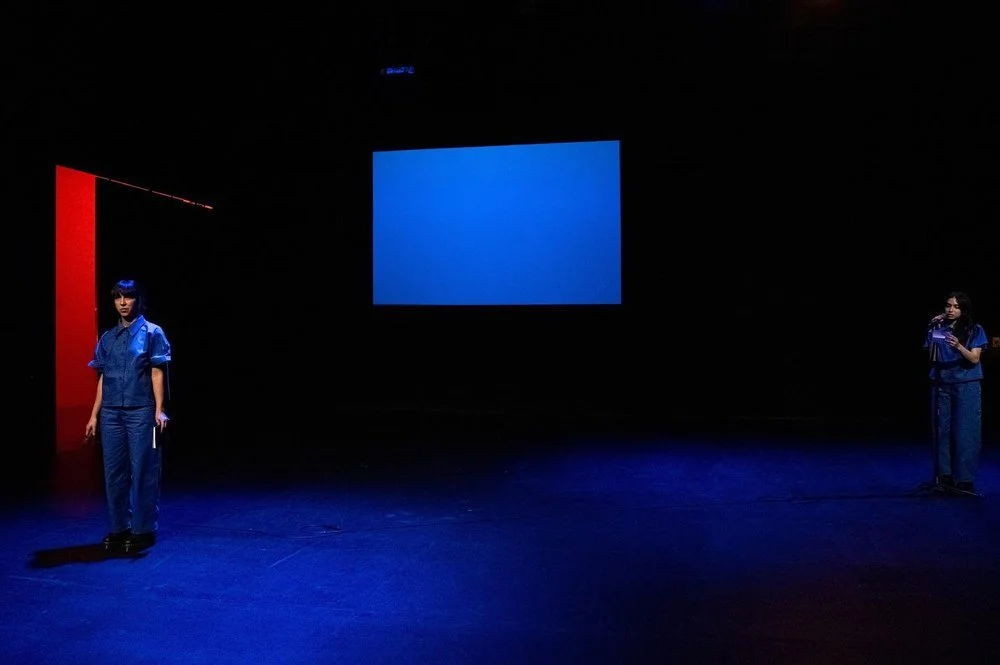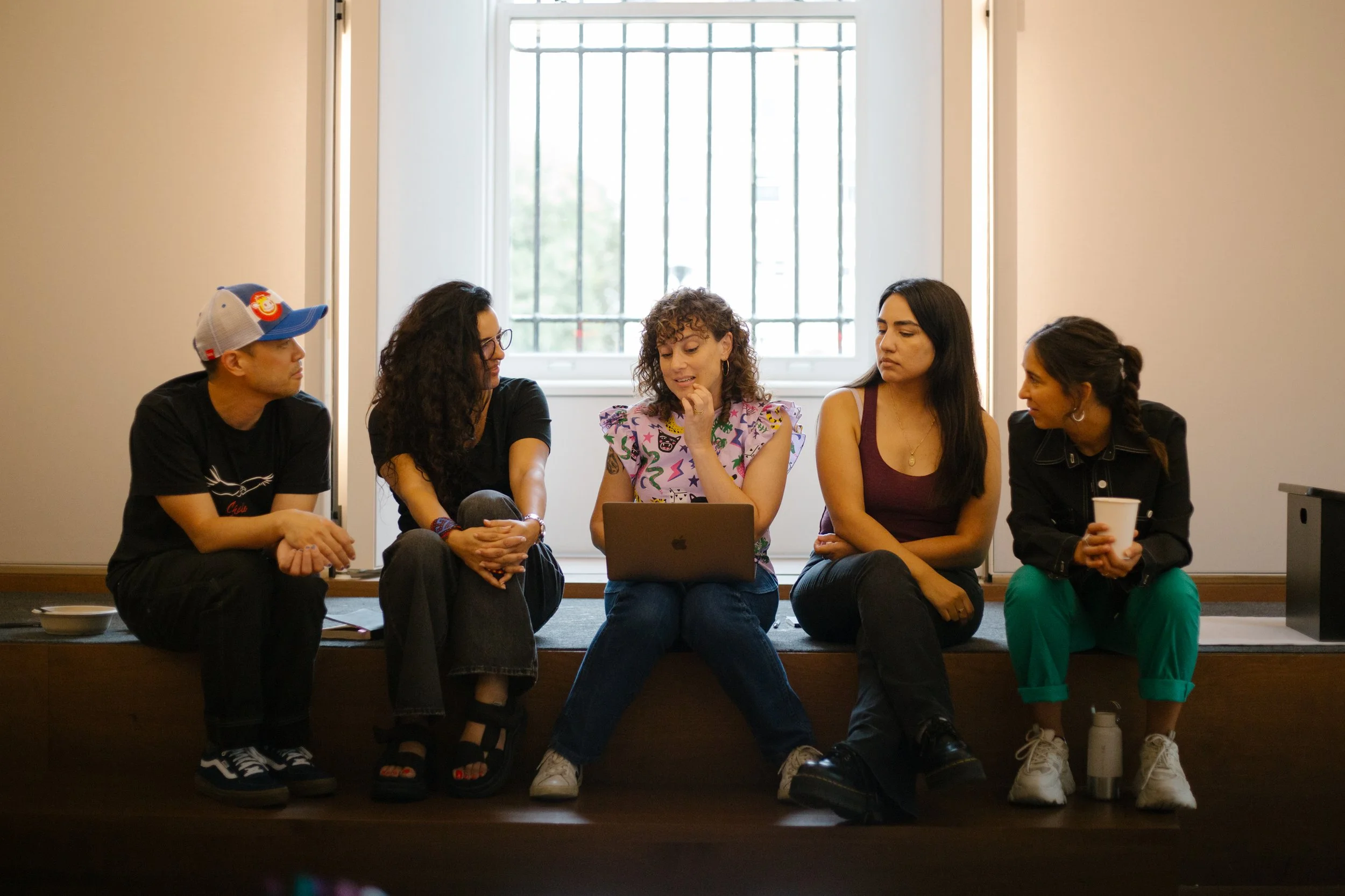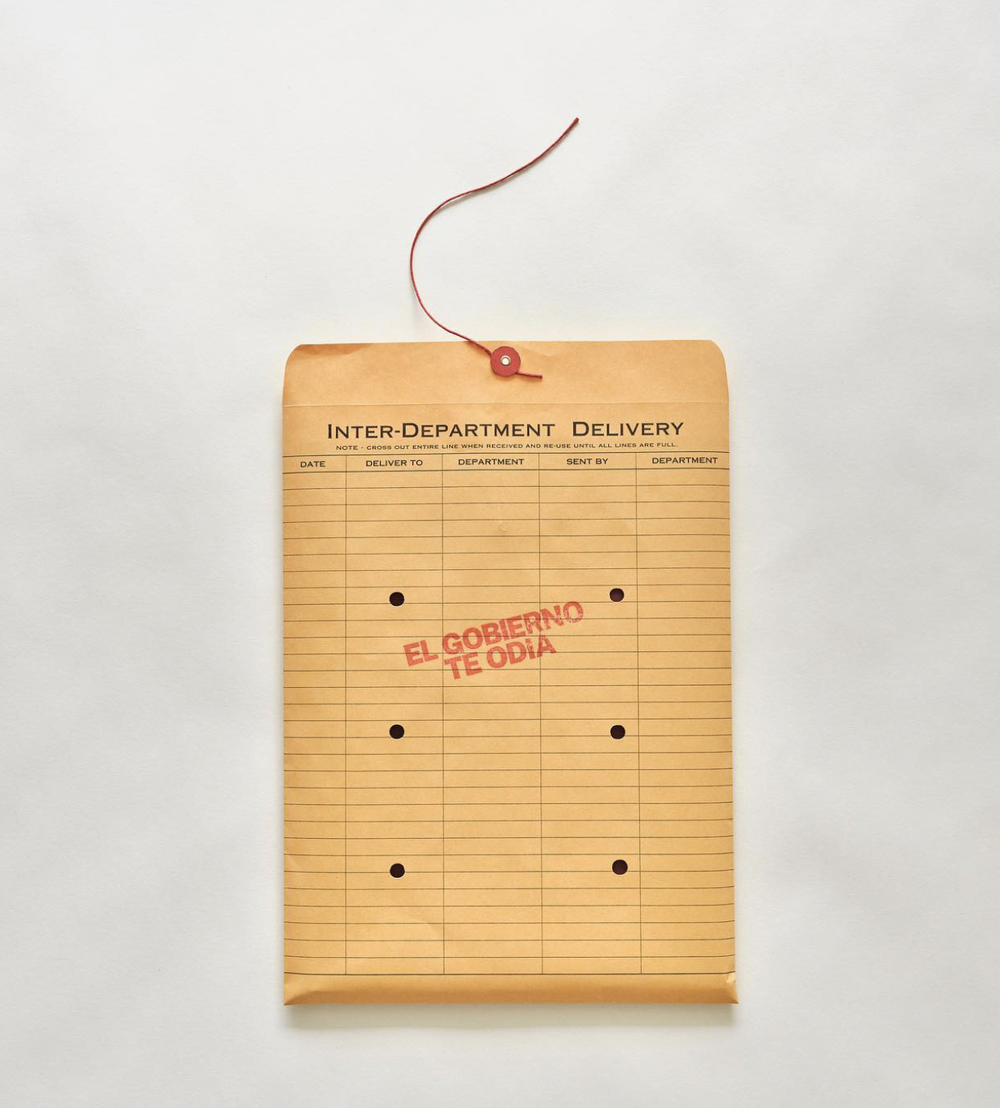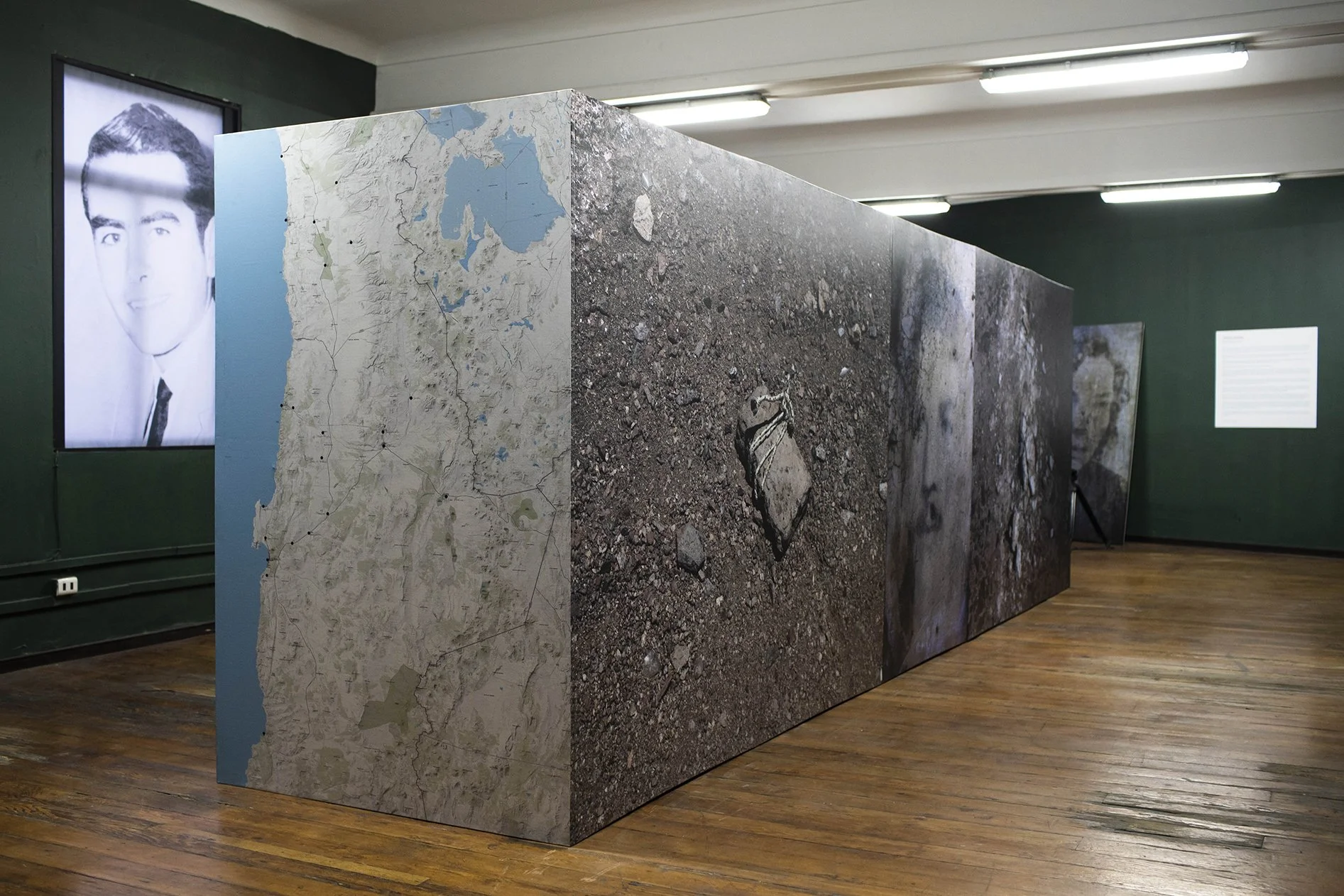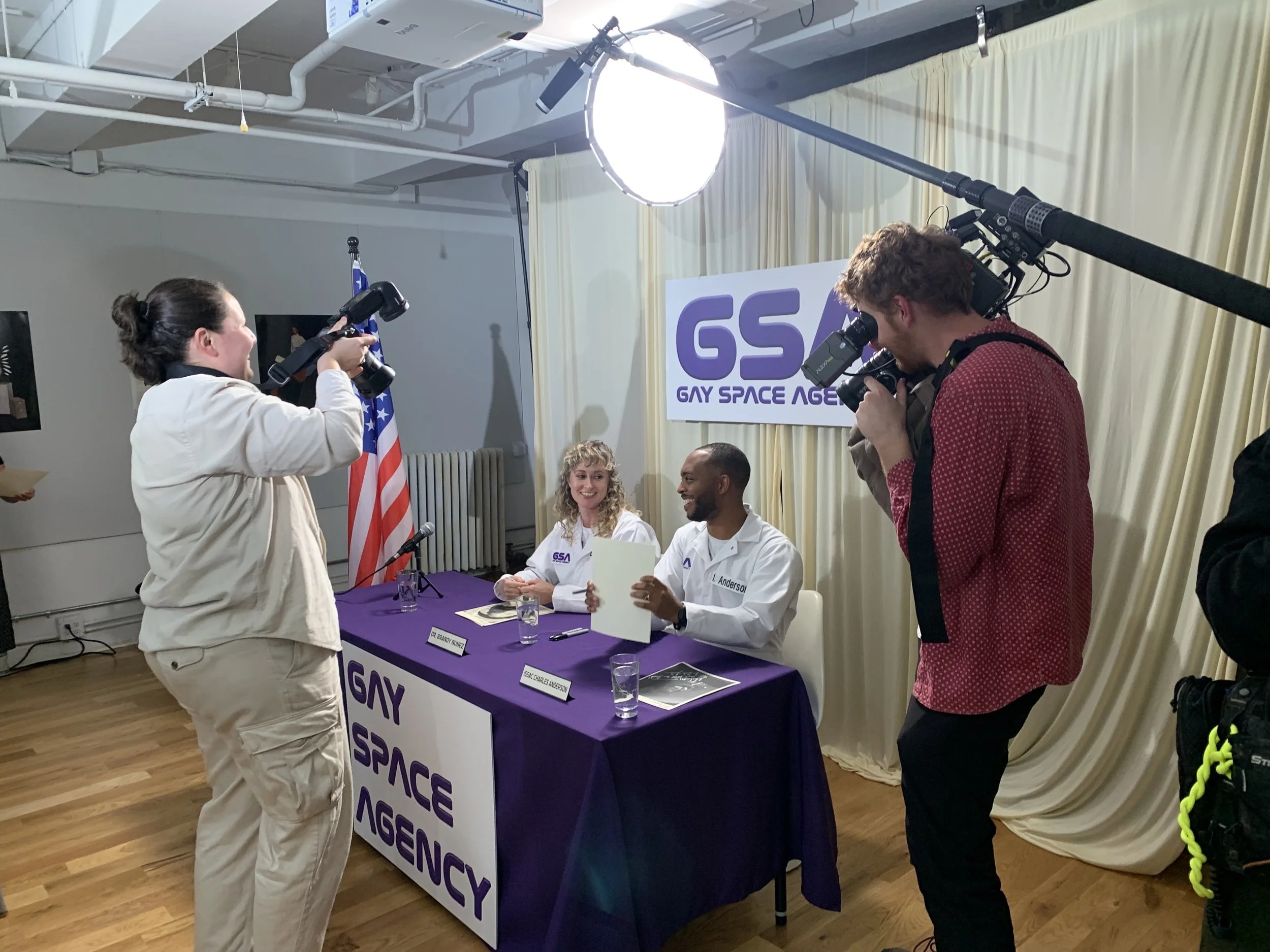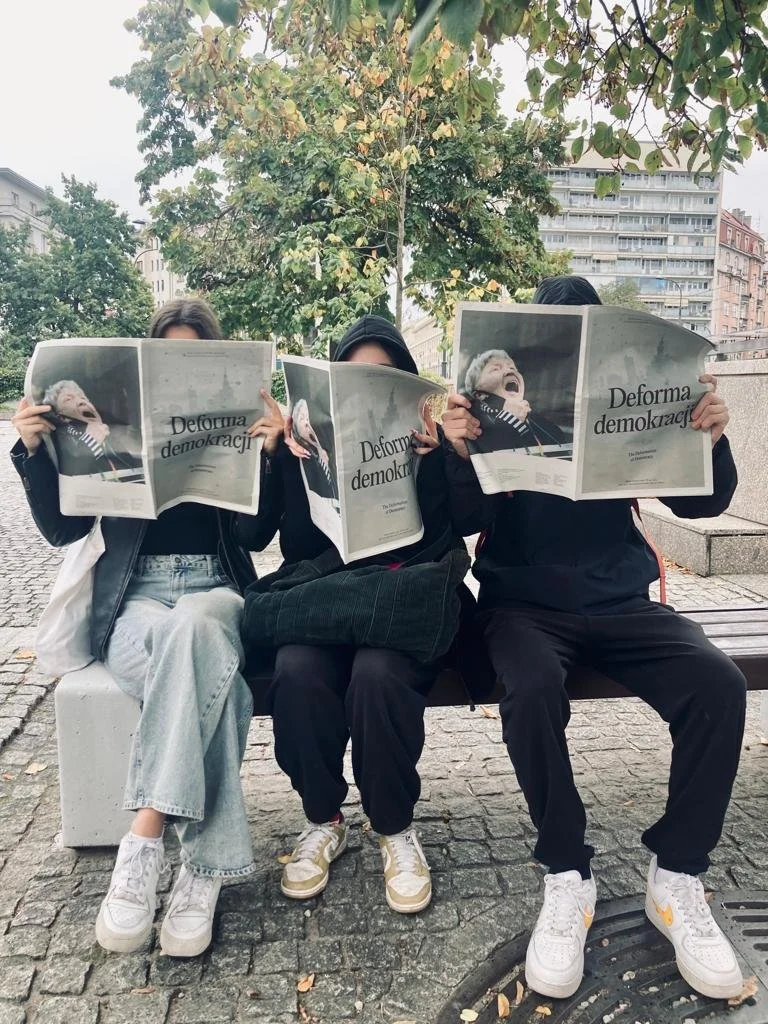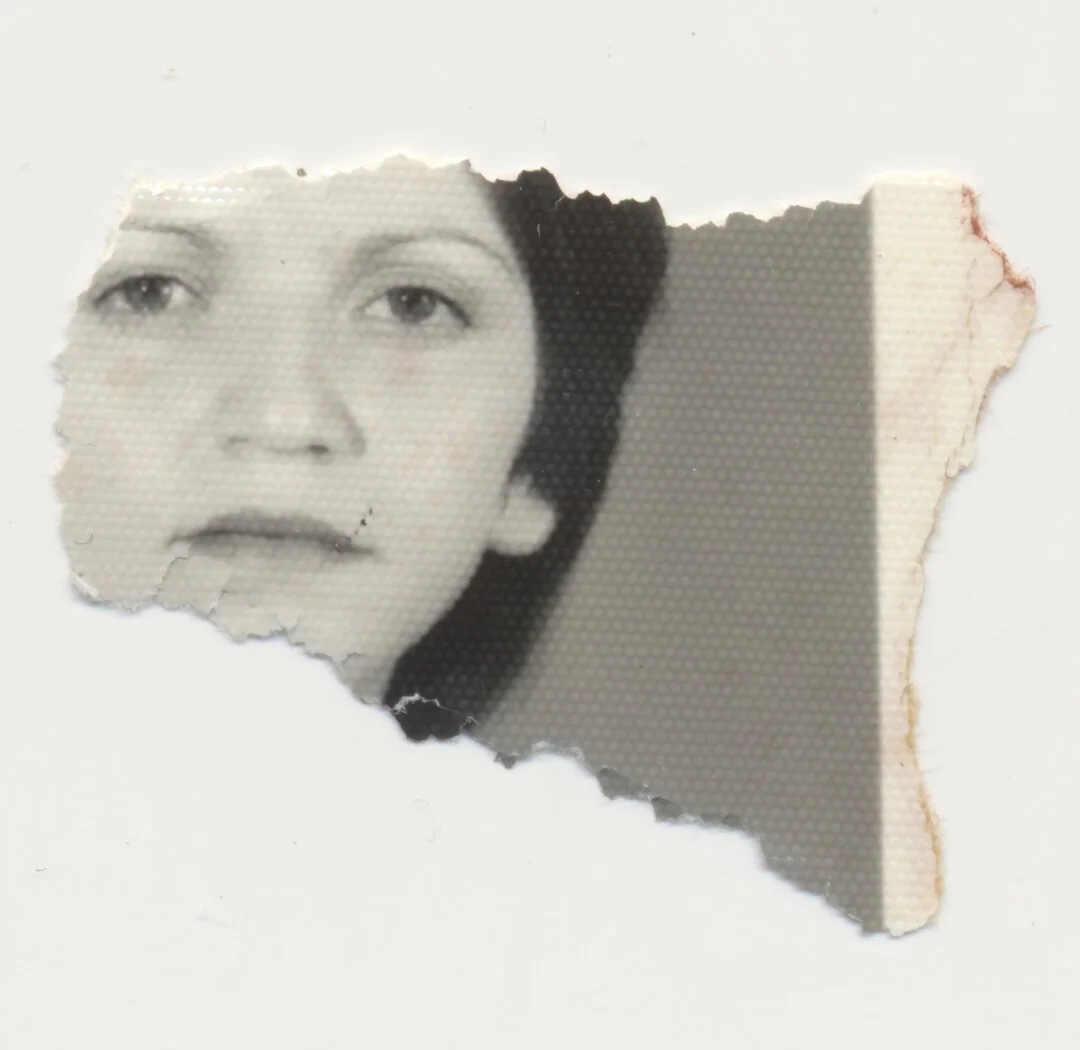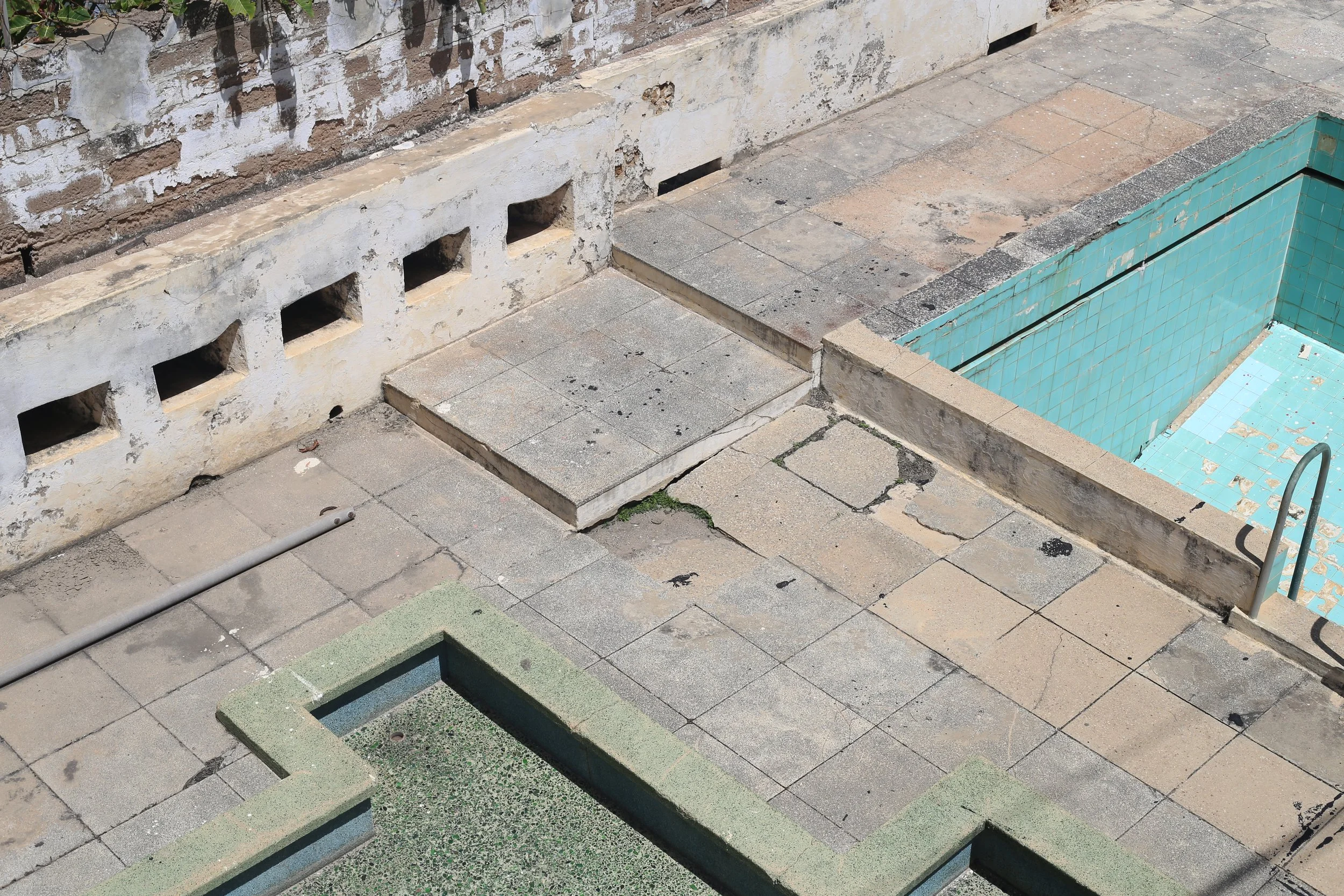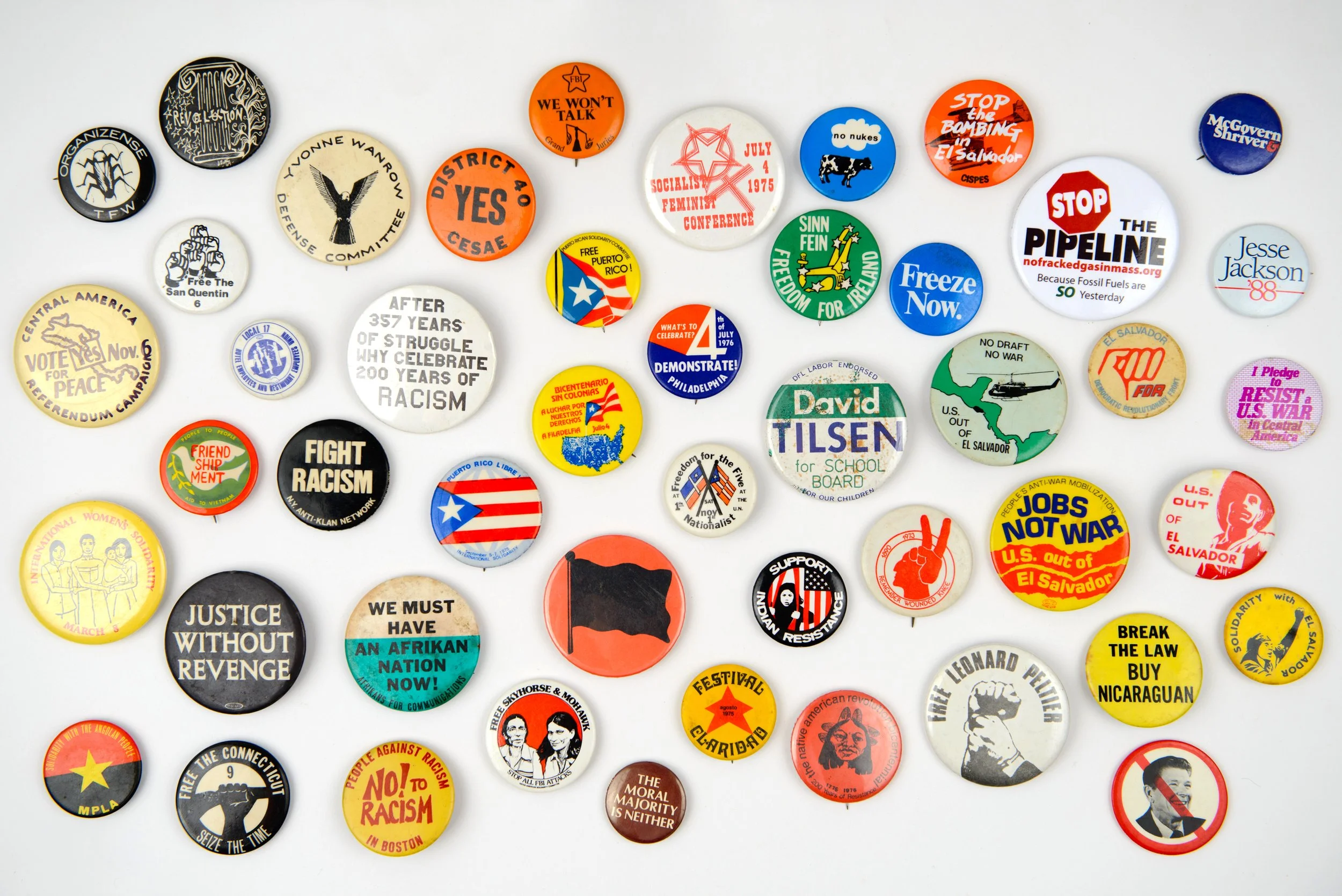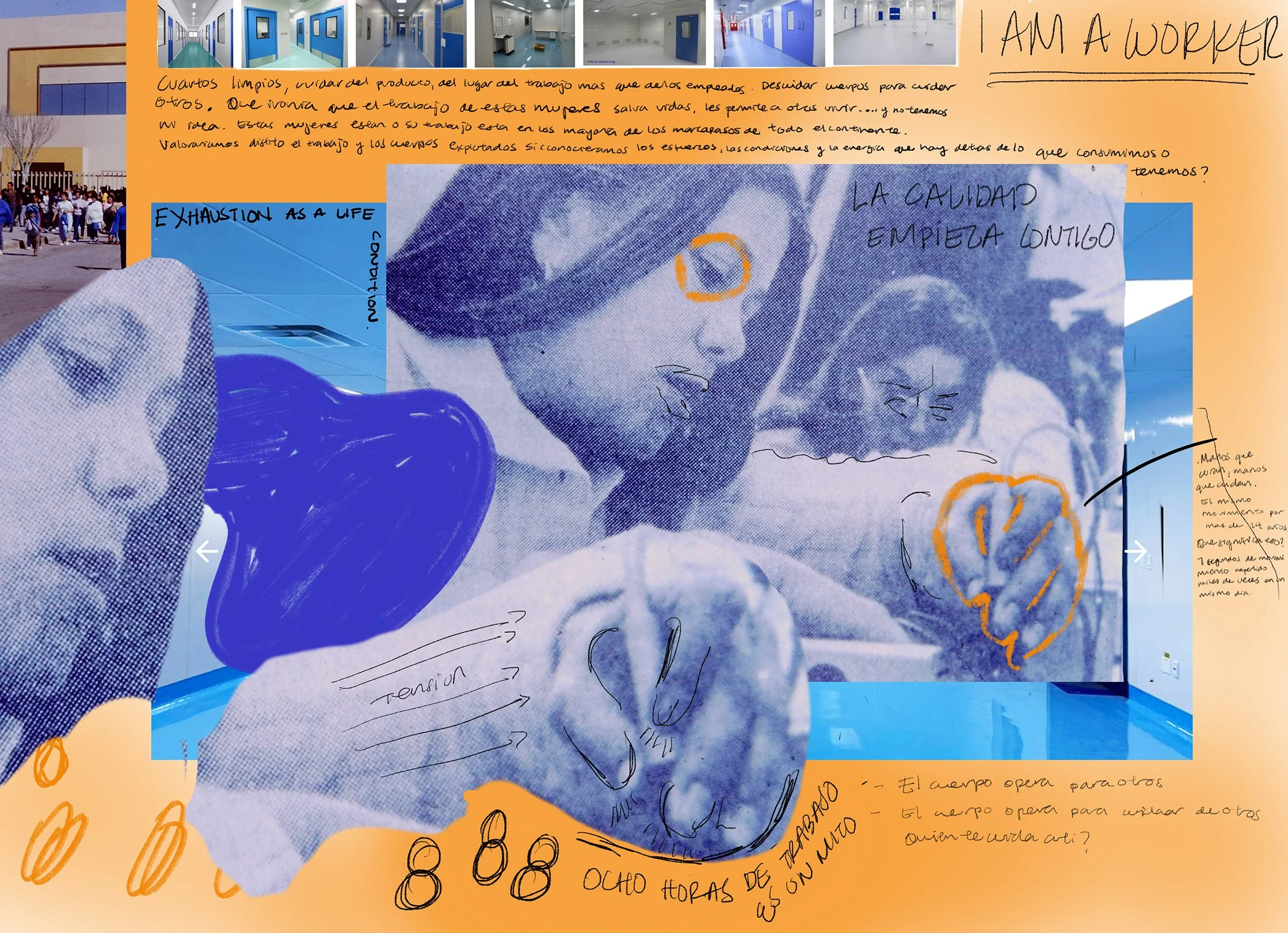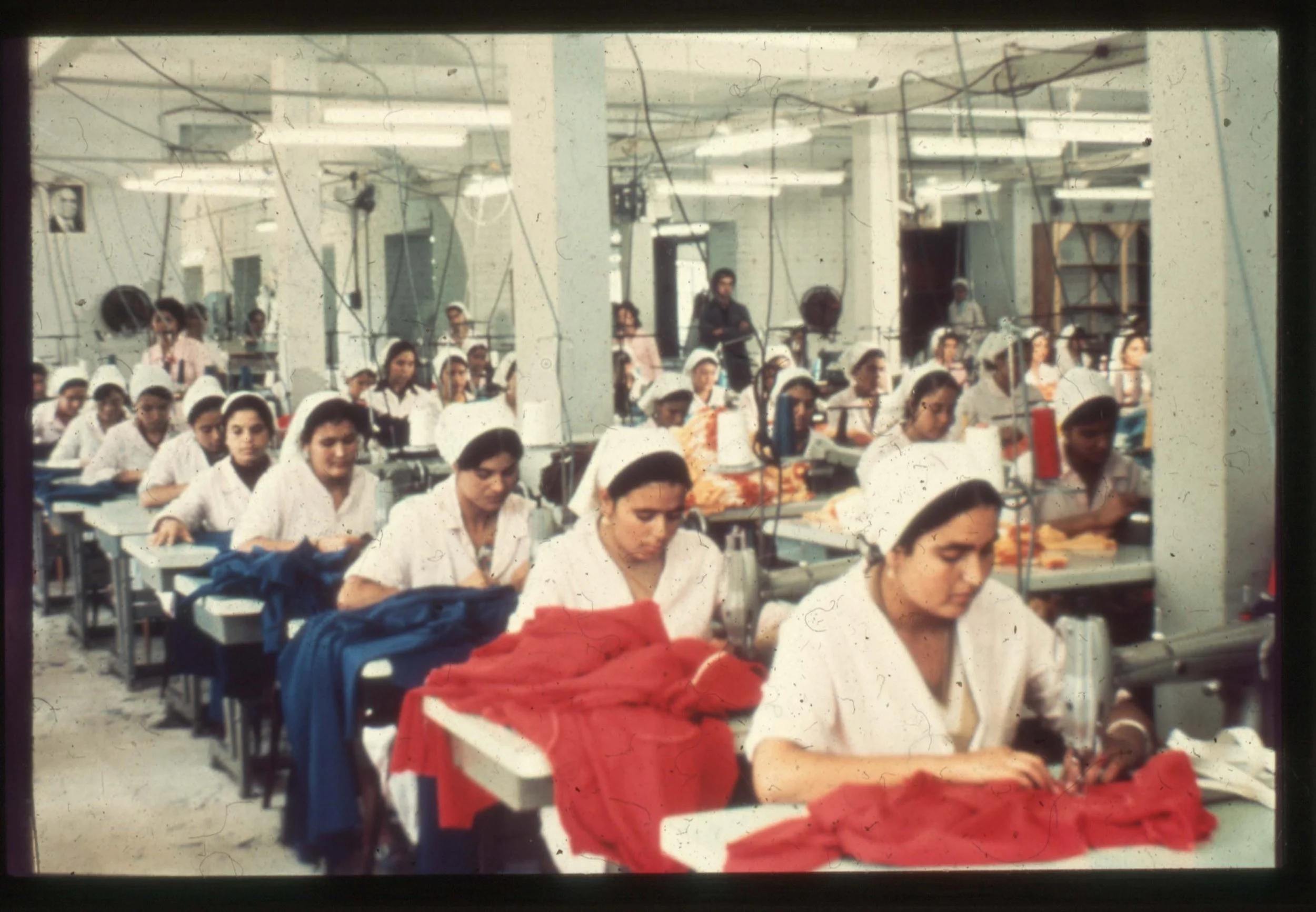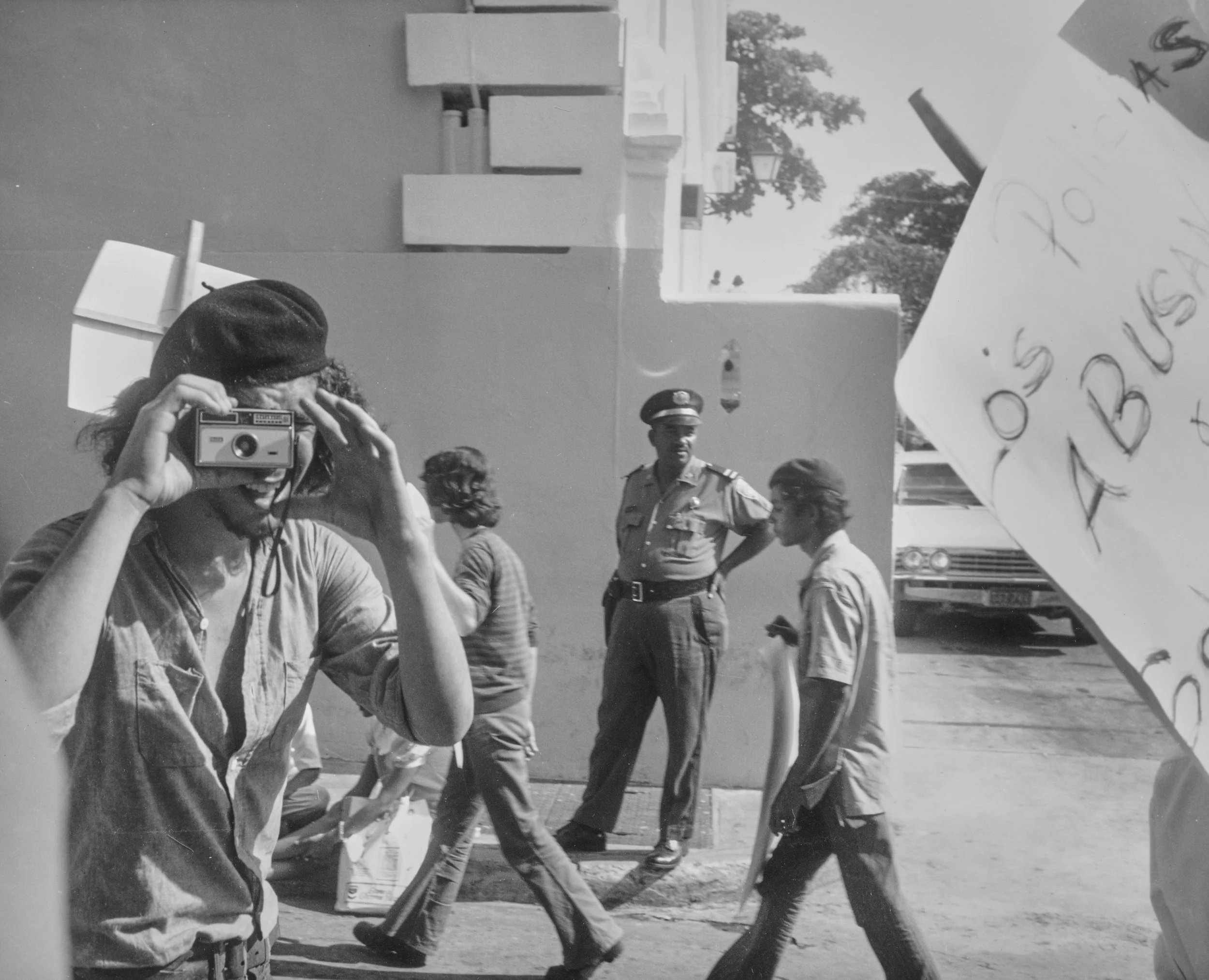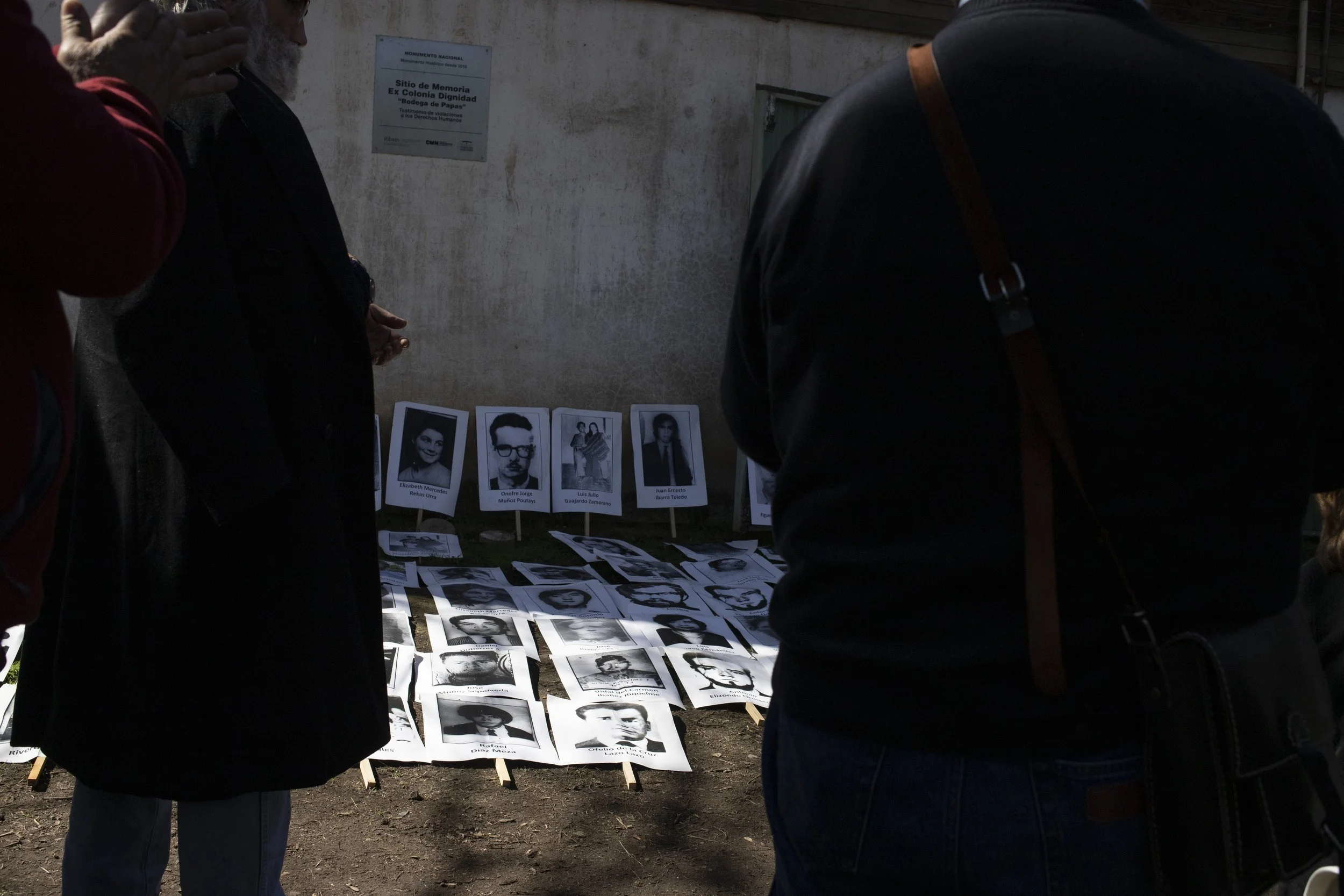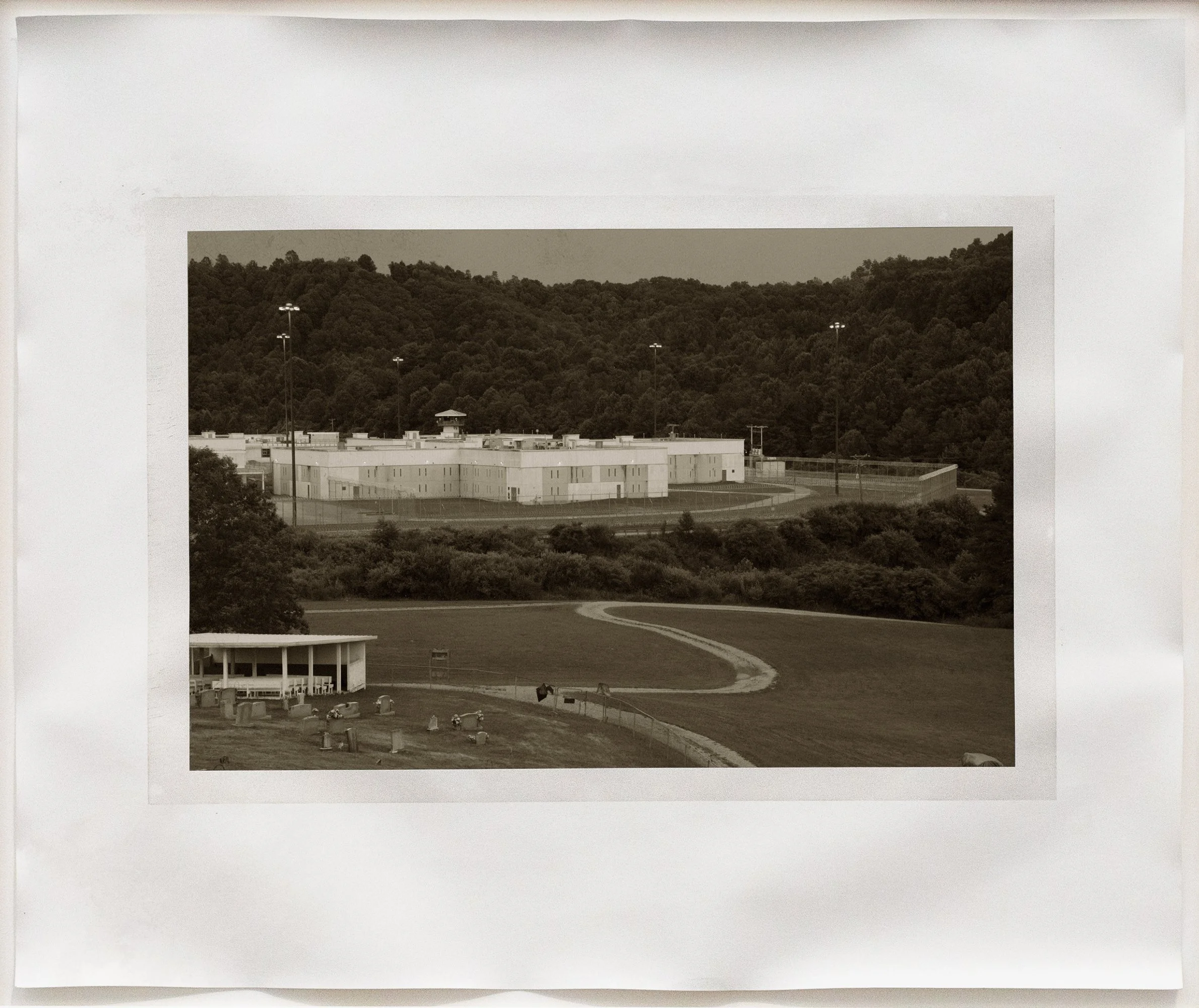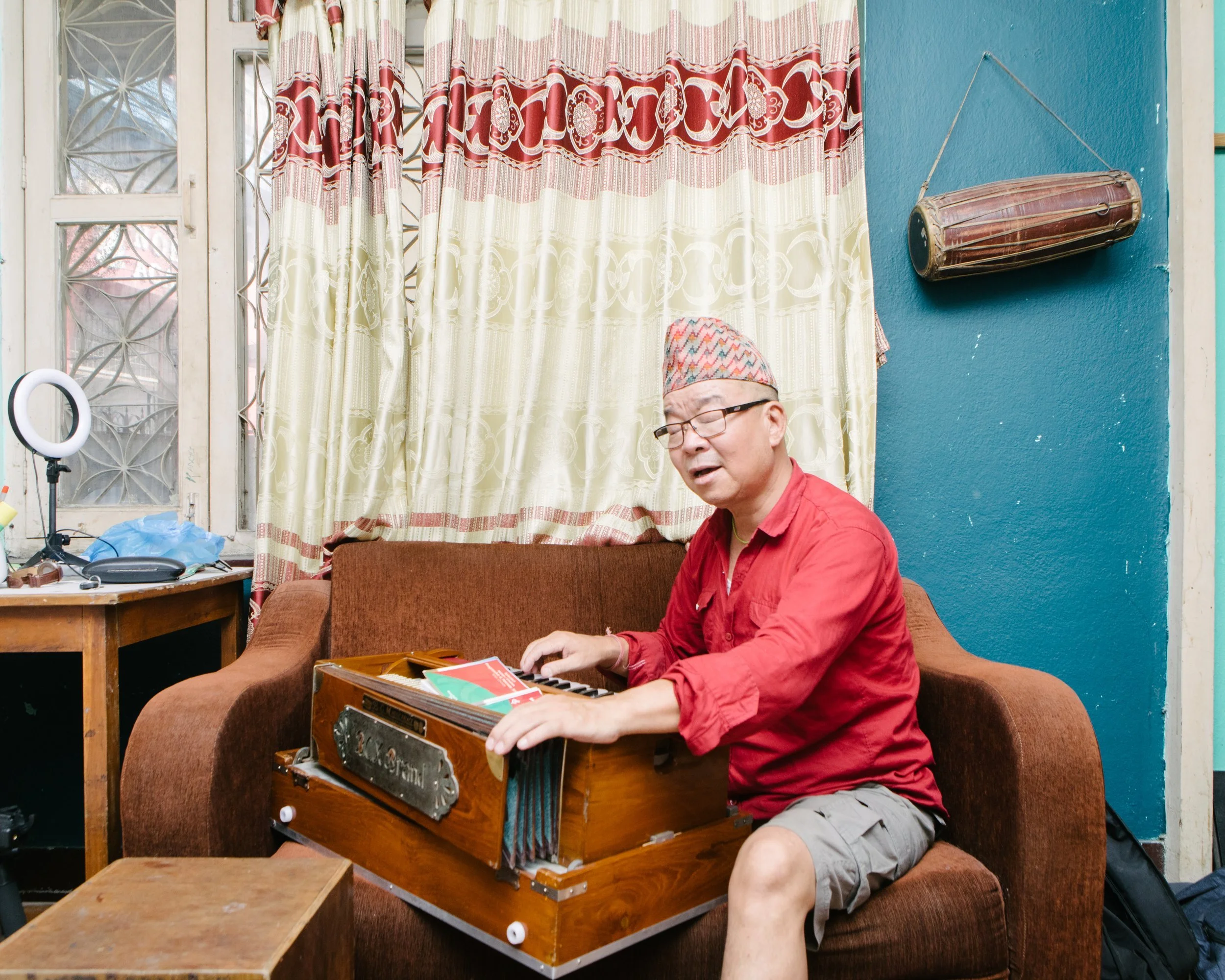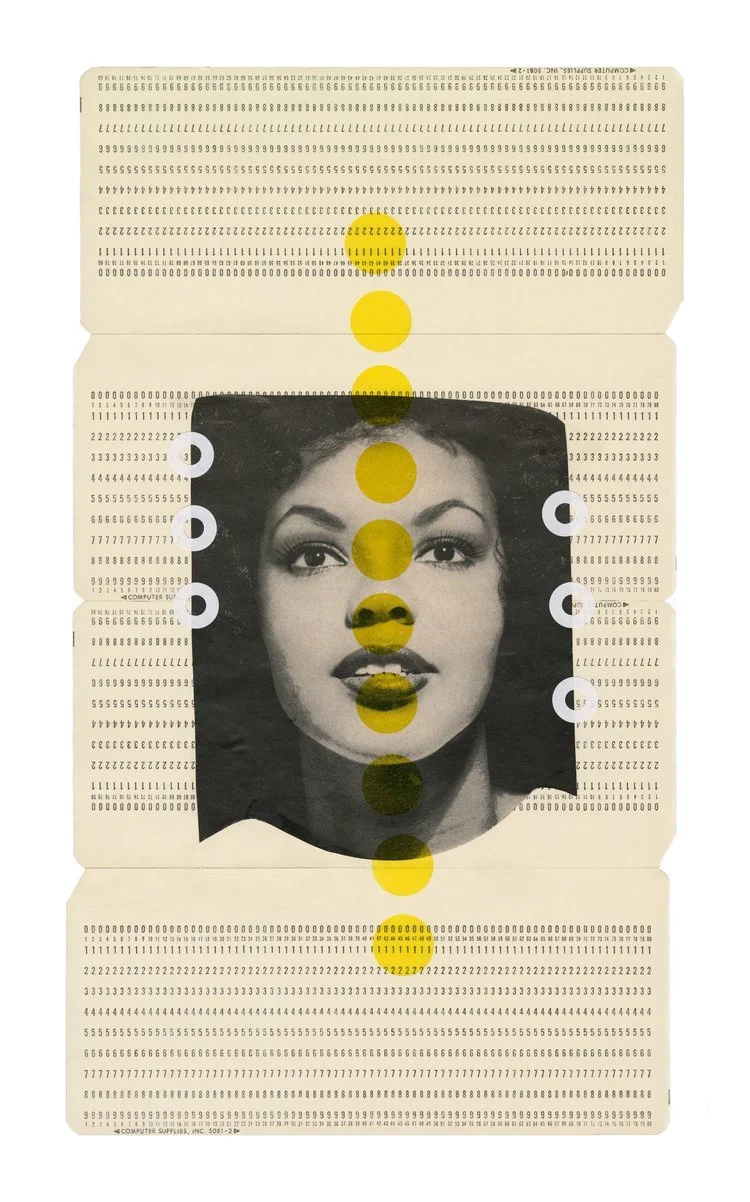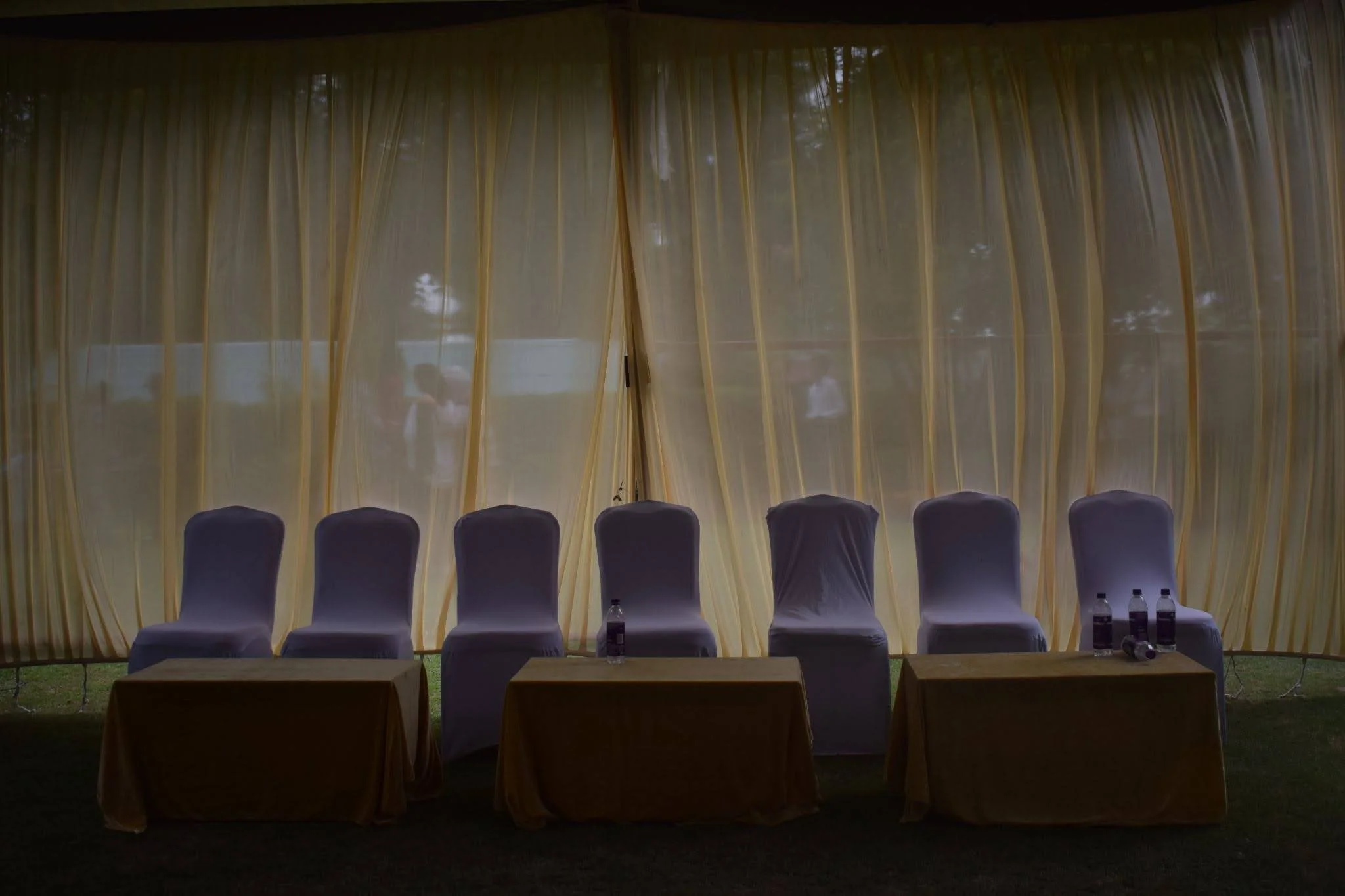Highlights from our 2022 Counter Histories Fellowship
Andrea Carillo Iglesias
Since 2018, Magnum Foundation’s Counter Histories initiative has supported artists who elevate suppressed histories, reframe dominant narratives, and challenge the power structures embedded in archives. By exploring the creative possibilities offered by the gaps, absences, and silences in historical records, Counter Histories offers an expanded and collaborative approach to historical inquiry and photographic storytelling—and suggests the radical possibilities of alternative narratives.
As we launch the open call for the 2025 cycle of our Counter Histories Fellowship, we're looking back at the achievements of our 2022 cohort, whose projects excavated records of state surveillance and suppression; assembled community archives of migration and labor; and reimagined official histories to center individual and family stories of resilience and resistance.
Following the conclusion of the 2022 fellowship, which supported twenty photographers with grants of $10,000 and project development workshops, we’ve spent the past year and a half showcasing these important stories through publications, exhibitions, and public programming, as well as experimental labs and second stage grants to further support the creative distribution of projects. See highlights below!
We partnered with Aperture for a special “Counter Histories” issue of the magazine
In collaboration with the Magnum Foundation, the Spring 2024 issue of Aperture magazine was “Counter Histories,” featuring photographers from around the world who tell powerful stories about complex social and political histories.
Dive into the issue through the short video spotlights below:
We produced several exhibitions and public programs showcasing this expanded approach to photographic storytelling
A visitor stands in front of Abdo Shanan’s work at Magnum Foundation’s exhibit on state archives. Photo by Destiny Mata.
This included exhibitions at the Magnum Foundation featuring projects that excavate records of state surveillance, national mythologies, and revolutionary histories (Spring 2024) as well as those that engage with personal and family archives (Spring 2023, and later at CPW Kingston in Spring 2024). At the annual Photoville festival in Brooklyn Bridge Park, we featured Mackenzie Calle’s Gay Space Agency (2023) and Prasiit Sthapit’s Moonsongs for Earth (2024).
We hosted a number of public programs engaging with the ideas of Counter Histories, including a conversation series in conjunction with the exhibition Images on which to build, 1970s-1990 at the Leslie-Lohman Museum; an “Edges of Evidence” roundtable on alternative historical evidence; and several book events, including for Hidden in Plain Sight: Selected Writings of Karin Higa and Alice Proujansky’s Hard Times are Fighting Times. In addition, we also organized a series of zine workshops with local artists, activists, youth, and elders focused on the histories of the Lower East Side, Chinatown, and Two Bridges neighborhoods.
Counter Histories Fellow Naomieh Jovin with one of her images exhibited alongside other family archive projects in Magnum Foundation’s space. Photo by Irynka Hromotska.
Counter Histories Fellow Prasiit Sthapit’s Moonsongs for Earth at Photoville. Photo by Yolanda Hoskey.
Zine workshop with Lower East Side and Chinatown artists in Magnum Foundation’s space. Photo by Cal Hsiao.
Counter Histories Fellow Mackenzie Calle’s The Gay Space Agency at Photoville. Photo by Irynka Hromotska.
A visitor stands in front of Chris Gregory-Rivera’s work at Magnum Foundation’s exhibit on state archives. Photo by Yolanda Hoskey.
Attendees at the opening of our Counter Histories exhibition on family archives. Photo by Irynka Hromotska.
Counter Histories Fellows and members of the Magnum Foundation and CPW Kingston teams at the “Counter Histories” exhibition at CPW Kingston.
We supported Fellows with second stage grants and other opportunities to experiment with new models for engaging audiences
As the 2022 Counter Histories Fellows wrapped up their fellowship terms, we provided them with further second stage distribution support, including discretionary grants for books, zines, performances, short films, and other activations to engage audiences with their projects. Under the Counter Histories umbrella, we also conducted an experimental lab on live performance and photography.
Counter Histories Fellow Andrea Carrillo Iglesias’s performance of Safety Blue based on archive from the 1980’s that documents the working conditions of women in the maquiladoras of the US-Mexico border. Photo by Guillermo Arias.
Participants in our Performance Lab. Photo by Irynka Hromotska.
Chris Gregory-Rivera’s El Gobierno Te Odia. Image courtesy of Chris Gregory-Rivera.
Counter Histories Fellow Marilyn Nance (left) with Betye Saar (right) in front of Nance's project FESTAC MEMORY PROJECT exhibited at Robert's Projects. Image courtesy of Marilyn Nance.
Claudio Pérez’s Ultima Huella at the Bienal Saco. See project as an e-book. Image courtesy of Claudio Pérez.
Counter Histories Fellow Ethel Ruth-Tawe’s Image Frequency Modulation, IFM [Radio] Installation at Library Fetish. Photo by Wami Aluko.
Filming of a faux press conference for Counter History Fellow Mackenzie Calle’s The Gay Space Agency. Photo by Sarah Perlmutter.
Alice Proujansky’s Hard Times are Fighting Times. Image courtesy of Alice Proujansky.
Distribution of a zine featuring Counter Histories Fellow Agata Szymanska-Medina's project on judicial reform in Poland. Image courtesy of Agata Szymanska-Medina.
Explore all twenty projects from the 2022-24 Fellowship:
Abdo Shanan | Algeria
Over sixty years after Algeria’s independence, why do colonial era photographs and revolutionary monuments continue to dominate the country’s public iconography? In The Right to a Memory, Shanan fills in the gaps of this national record, inserting his own archive of everyday Algerians. Through found photographs, community sourced family albums, and his own portraits of friends and strangers, Shanan weaves a more inclusive narrative—one, he hopes, with which more Algerians can identify.
See the project in the world: Featured in the “Counter Histories” issue of Aperture | Exhibit at Tasweer Photo Festival in Qatar | Exhibit at Magnum Foundation | Featured in ZAM Magazine
Adjoa Armah | Ghana / United Kingdom
Each Point is a Threshold is an (un)mapping and rethinking of the historiography of the Black Atlantic from the Ghanaian coast and beyond. For this project, photography is non-hierarchically embedded in a web of tools and practice meant to ultimately attend to a single question: How may we better understand one another from here? The ‘we’ in this question refers to people of the African diaspora globally, the ‘here’ the communities surrounding European-built fortresses along the Ghanaian coast and the elsewheres they lead; points across the West African subregion at which routes of diasporic remembrance converge.
Agata Szymanska-Medina | Poland
The “Good” Change traces the dismantling of the rule of law in Poland, and examines those who defend it: judges persecuted by the PiS political party. Through photographic and online investigation, Szymanska-Medina uncovers the otherwise invisible campaigns to target these judges, who represent the last bastion of hope for an independent judiciary and progressive future in Poland.
See the project in the world: Featured in the "Counter Histories" issue of Aperture | Exhibit at Magnum Foundation | Exhibit at NYU’s Gallatin Galleries
Alan Chin | United States
Sourced through an ongoing open-call for Chinese Americans in New York to share their intergenerational family histories, Chinese American Family Albums is an archive that brings together troves of photographs and ephemera that document the role of Chinese Americans in the larger history of immigration in the United States. Alongside a zine that weaves in Chin’s own family history, the images illuminate the evolution of the Chinese American immigrant experience and highlight how many ordinary lives consisted of extraordinary experiences of courage, faith, and fortitude.
See the project in the world: Exhibit at Magnum Foundation | Exhibit at the Center for Photography at Woodstock | Exhibit at the Museum of the City of New York
Alice Proujansky | United States
Hard Times are Fighting Times is an archival and documentary project that describes the legacy of Proujansky’s parents’ participation in radical leftist groups like Weatherman, the Native American Solidarity Committee and Prairie Fire that sought to overthrow imperialism and capitalism through organizing and revolution. “Radicals like my parents believed that another world was possible, that together they could forge a more just future for humanity. Their utopian dreams of Marxist-Leninism, feminist rigor and fairness are deeply compelling – but also intensely rigid.”
See the project in the world: Hard Times are Fighting Times the book | Featured in the "Counter Histories" issue of Aperture | Exhibit at Photoville festival in Brooklyn | Solo exhibit at Baxter St CCNY
Andrea Carrillo Iglesias | United States / Mexico
Safety Blue is a performative work that weaves past and present histories regarding women, labor, and oppression, and is articulated by an archive from the 1980’s that documents the working conditions of women in the maquiladoras of the US-Mexico border. The project is motivated by the recognition and recuperation of collective forms of resistance that are enacted from the body, and by the possibility to reorient history and construct new senses of truth.
See the project in the world: Live performance at Festival Cuatro x Cuatro in Rosarito | Exhibit at Human Resources in Los Angeles
Belhassen Handous | Tunisia
In the Shadow of Our Founding Father is an experimental dive into the Tunisian state’s iconography during the last chapter of Tunisian Prime Minister turned President Habib Bourguiba’s capitalist experiment in the 1970s and 80s.
See the project in the world: Exhibit at philomena+ in Vienna, Austria | Exhibit at Factory Fest in Tunisia
Christopher Gregory-Rivera | United States / Puerto Rico
From the 1940’s until 1987 the Puerto Rican Police–in collaboration with the FBI and CIA—watched, intimidated, and in some cases murdered political activists on the island. When the unit was dismantled, the original surveillance files were returned directly to the victims, whole and unredacted. Over the past nine years, Christopher Gregory-Rivera has acted as a guerilla archivist, finding these dispersed files in private homes and recompiling a fragmented archive of state power. Combined with declassified secret police photographs from national archives and leaked surveillance footage of protests as recent as 2017, Las Carpetas offers a window into forbidden political history and a chance at a national truth and reconciliation process.
See the project in the world: Featured in the "Counter Histories" issue of Aperture |Short biopic produced by Magnum Foundation and Aperture Foundation | El Gobierno Te Odio the book, first edition published by Penumbra Foundation | Second edition published by Los Sumergidos | Recipient of the Paris Photo x Aperture Photobook Awards Photobook Prize | Exhibit at Magnum Foundation
Claudio Pérez and Catalina Jeanneret | Chile
“Not having a family photo is like not being a part of the history of humanity." — Ana González, mother, wife, and mother-in-law of 5 detained-disappeared
Ultima Huella collects photographs and reconstructed portraits of all 1,197 individuals who were detained and disappeared during the reign (1973-1990) of Chilean dictator Augusto Pinochet. For those whose images could not be found, Pérez and Jeanneret reconstructed the faces of the victims without any photographs, relying mainly on conversations with families to complete their Wall of Memory Archive.
See the project in the world: Exhibit at OFFSCREEN in Paris | Exhibit at SACO Contemporary Art Biennial
Ethel-Ruth Tawe | Cameroon / Netherlands
Image Frequency Modulation is an ongoing iterated body of work investigating the sonic, visual and haptic frequencies of images. It is concerned with ancestral memory, transmission, oral tradition, and metaphors of radio technologies as sites of possibility for the African diaspora. Frequency modulation, or FM as popularly known in radio, is the encoding of information in a carrier wave; a metaphor for diasporic connectivity across time and space. The artist traces her father’s relationship to sound as an interpreter and former radio host, reading into black interior life through the ways in which he documented his own. IFM installations are shapeshifting living archives, decrypting Black feminist theorist Tina Campt's notion of haptic images: “how we touch and are touched by images”.
See the project in the world: Exhibit at PhotoIreland Festival | Featured in Something Curated
Jonas N.T. Becker | United States
Better or Equal Use is a series of photographs that use coal dust to depict redevelopment projects on former mining sites in Appalachia, from prisons to big box stores, highlighting the interrelated histories of extraction and oppression in the region.
See the project in the world: Featured in Frieze Magazine | Solo exhibit at the Wexner Center for the Arts
Mackenzie Calle | United States
To date, 339 Americans have trained to be astronauts. None have flown into space as an openly LGBTQIA+ person. Further, astronauts in NASA’s Mercury, Gemini, and Apollo programs were required to take “heterosexuality tests.” The Gay Space Agency confronts the American space program’s historical exclusion of openly queer astronauts, reimagining a history of the space program that celebrates queerness and highlights LGBTQIA+ role models.
See the project in the world: Recipient of the World Press Photo Award | Exhibit at Photoville Festival in Brooklyn | Exhibit at ICP Incubator Space | Jurors’ Pick for LensCulture’s Emerging Talent Awards
Marilyn Nance | United States
FESTAC MEMORY PROJECT collects archives artifacts and voices from the Second World Black and African Festival of Arts and Culture—also known as FESTAC ’77 and makes this Pan African festival accessible to a wide audience in the 21st century. With the help of a new generation of art scholars, Nance continues to work on ways to tell the story of this historic Pan-African happening through her collection of ephemera, oral histories, small films, lectures, photographs, books, banners and murals.
See the project in the world: Last Day in Lagos the book | Solo exhibit at Roberts Projects in Los Angeles
Naomieh Jovin | United States
Incorporating images from family albums, original photography, and voice memos, this project reflects the compounding losses felt by the women in Jovin’s Haitian-American family as they grieve the community they leave behind, and the loss of their personal and collective history through migration. By reclaiming images her family made during their lifetimes, Jovin hopes to forestall this loss—to show the purpose and honor that defined their lives; to listen to her ancestors as teachers through whose eyes we can view the world; and to seek to know how we come to understand what is true.
See the project in the world: Featured in the "Counter Histories" issue of Aperture | Exhibit at the Center for Photography at Woodstock | Exhibit at Magnum Foundation | Short biopic produced by Magnum Foundation and Aperture Foundation
Prasiit Sthapit | Nepal
Moonsongs for Earth is an exploration of the role of music during and after the decade-long war in Nepal. Through video and portraiture, Sthapit documents Maoist musicians, whose songs of revolution envisioned a just, egalitarian society—and whose dreams would ultimately be betrayed.
See the project in the world: Featured in the “Counter Histories” issue of Aperture | Short biopic produced by Magnum Foundation and Aperture Foundation | Exhibit at Magnum Foundation
Qiana Mestrich | United States
Inspired by images of her mother, who worked in sales at the Rugol Trading Corporation offices in the late 1960s, Qiana Mestrich began this project as a community-driven archive visualizing the labor of women of color in the American workforce. Limited by the minimal archival materials she could find, Mestrich created her own speculative representations of the labor history of Black women and other women of color. Through collages of archival images from fashion and office supply magazines, she intervenes in this gap in the historical record to center these women's agency and pursuit of financial independence within global capitalism.
See the project in the world: Exhibit at Magnum Foundation | Exhibit at the Center for Photography at Woodstock
Salih Basheer | Sudan
“My birthday is on January 1, 1995. It is the date listed on my birth certificate, but I do not know my real date of birth. Like many of my generation in Sudan, I was granted an estimated birthdate of January 1st by the state due to a lack of infrastructure to build a modern digital archive system.” Combining government identification photos, current and archival TV news coverage, photographs of recent protests, and photographs of daily life in Khartoum tinted red by heat-damaged film, Blue: Children of January explores Sudan’s history of military coups and revolutions and their effects on the country's future.
See the project in the world: Exhibit at Tasweer Photo Festival in Qatar| Nomination by Magnum Photos | 22 Days In-Between the book, published by Disko Bay | Recipient of the Photo-Text Book Award at Arles Les Rencontres De la Photographie Festival
Sanna Irshad Mattoo | India
"The Impossibility of History is a story about my people and my community of journalists in Kashmir."
See the project in the world: Recipient of Pulitzer Prize for Feature Photography
Saodat Ismailova | Uzbekistan
Arslanbob is a three screen video installation depicting the Arslanbob forest, which covers 16,000 hectares of the south of Kyrgyzstan and is considered to be the oldest and biggest walnut forest of the world. Going beyond the human, this project encounters the forest and its foothold in the pantheon of central Asian female mythology.
See the project in the world: Featured in Frieze Magazine | Premiered at Kunstenfestivaldesarts, WIELS
Tamara Abdul Hadi | Canada / Lebanon
As a child in the Iraqi diaspora, the 1977 book Return to the Marshes: Life With the Marsh Arabs of Iraq (Gavin Young, with photographs by Nik Wheeler) sat in Abdul Hadi’s family home and influenced her imagination of Iraq, the Marshes, and their people. Through this new work, Re-Imagining Return to the Marshes, she re-examines photographic representation of the Iraqi Marshes found in the original book, along with her own photography and images made by her father and Iraqis in Iraq and the diaspora.
See the project in the world: Featured in the British Journal of Photography | Exhibit at Magnum Foundation | Exhibit at the Center for Photography at Woodstock
Magnum Foundation’s Counter Histories initiative is made possible by the generous support of The Henry Luce Foundation. Additional support for the 2022-24 Counter Histories Fellowship was provided by The Fledgling Fund, the Phillip and Edith Leonian Foundation, the Andrew W. Mellon/ACLS Early Career Fellowships, the William Talbott Hillman Foundation, and Columbia University’s Brown Institute for Media Innovation.


